In the figure and are two light springs of stiffness k and 4k respectively. When springs are in relaxed state, seperation between their free ends is . A uniform solid cylinder of mass m and radius R is placed exactly midway between the free ends of the springs with its axis horizontal and perpendicular to the springs . Now consider the two cases separately.
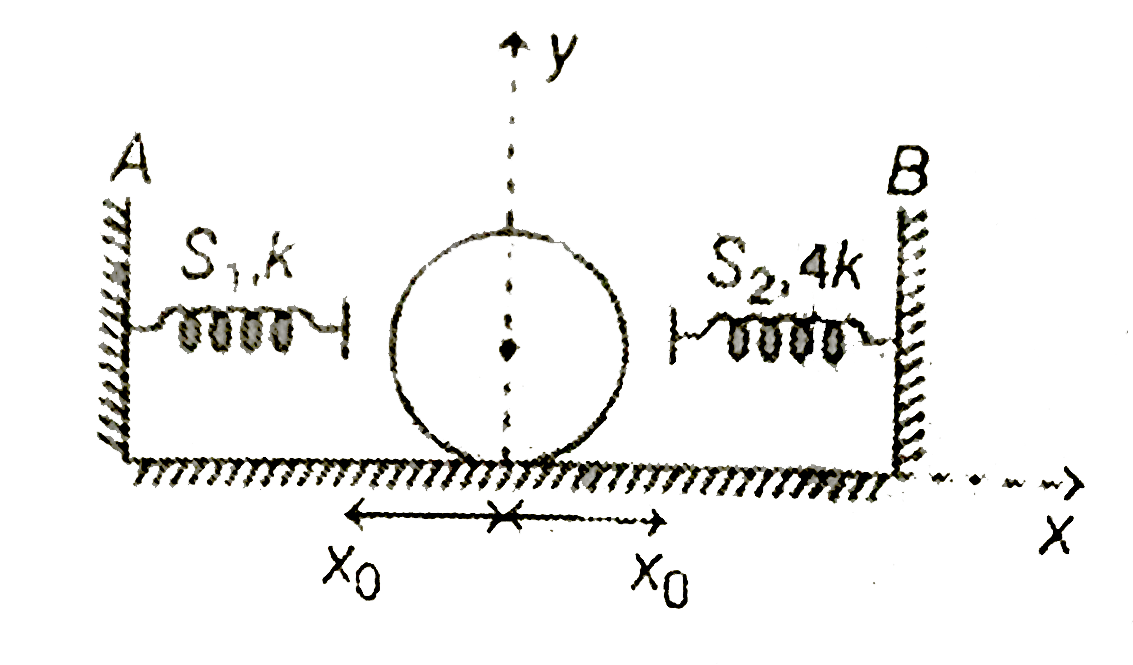
Case I : The cylinder is imparted speed towards left. When the cylinder comes to rest momentarily the co-ordinates of its centre are either ( or .
Case II: The Cylinder is imparted speed toward left and angular speed in clockwise sense simultaneously . At the time of maximum compression in the springs the co-ordinates of centre of the cylinder are either Now answer the following questions assuming that friction is absent every where.
The value of is
The correct Answer is:A
Topper's Solved these Questions
- ROTATIONAL MOTIONBOOK - DC PANDEYCHAPTER - ROTATIONAL MOTIONEXERCISE - Matrix Matching Type Questions
17 Videos
- ROTATIONAL MOTIONBOOK - DC PANDEYCHAPTER - ROTATIONAL MOTIONEXERCISE - Integer Type Questions
17 Videos
- ROTATIONAL MOTIONBOOK - DC PANDEYCHAPTER - ROTATIONAL MOTIONEXERCISE - More than one option is correct
36 Videos
- ROTATIONAL MECHANICSBOOK - DC PANDEYCHAPTER - ROTATIONAL MECHANICSEXERCISE - Subjective Questions
2 Videos
- SEMICONDUCTORS AND ELECTRONIC DEVICESBOOK - DC PANDEYCHAPTER - SEMICONDUCTORS AND ELECTRONIC DEVICESEXERCISE - More than One Option is Correct
3 Videos
Similar Questions
Four rods of equal length l and mass m each form a square as shown in figure. Moment of inertia about three axes 1,2 and 3 are say I1,I2 and I3 . Then, match the following
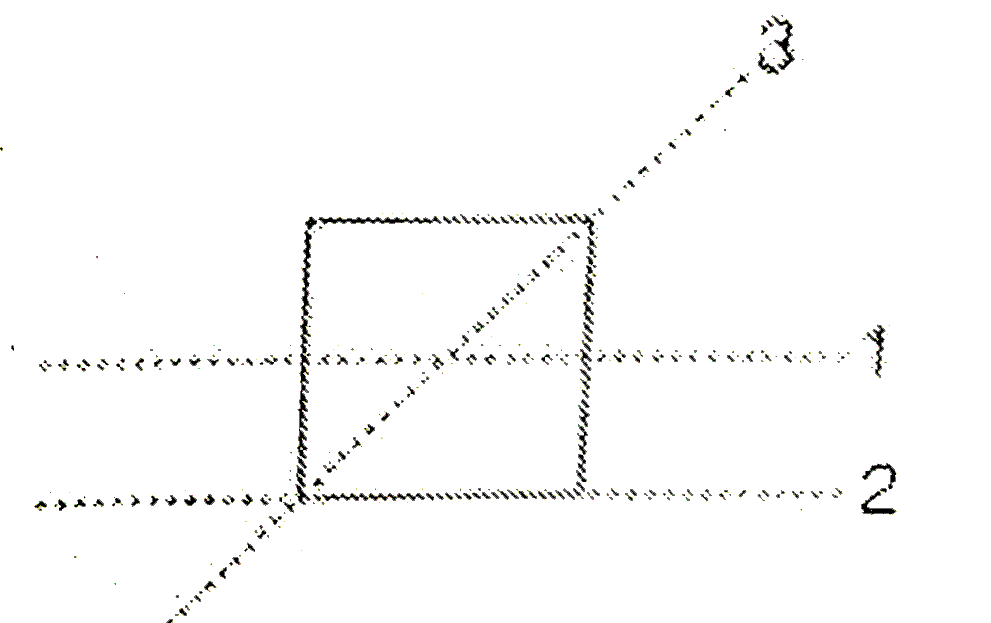
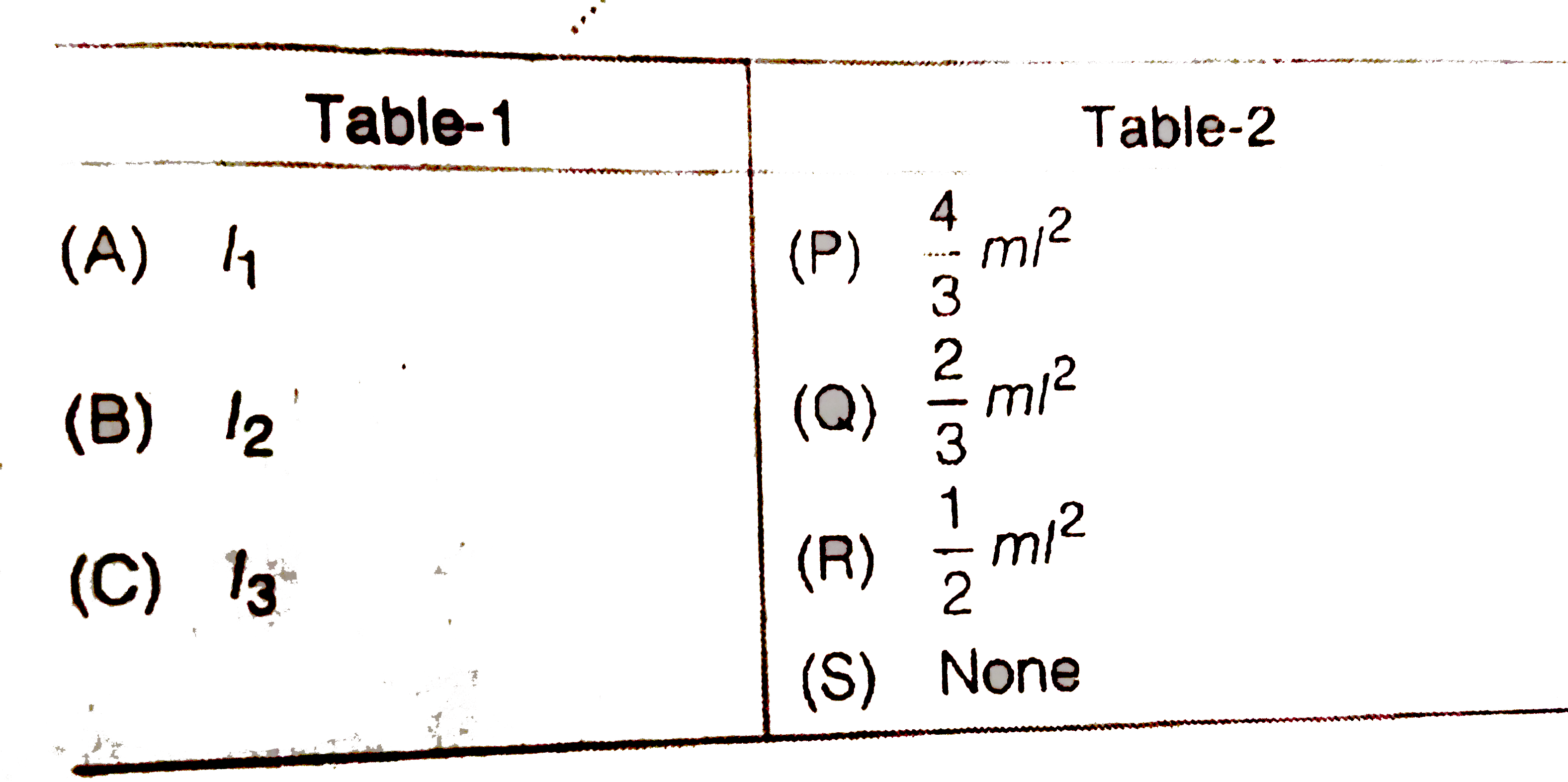
View SolutionA ring and a disc having the same mass, roll without slipping with the same linear velocity. If the kinetic energy of the ring is 8 j , Find the kinetic energy of disc (in J)
View SolutionWhich of the following statement (s) is / are correct for a spherical body rolling without slipping on a rough horizontal ground at rest?
View SolutionA uniform rod of mass m and length l rests on a smooth horizontal surface. One of the ends of the rod is struck in a horizontal direction at right angles to the rod. As a result the rod obtains velocity v0. Find the force with which one-half of the rod will act ont he other in the process of motion.
View SolutionWhen an electric field is applied across a semiconductor,
View SolutionIn Fig. three identical massless springs are kept horizontal. The left end of the first is tied to a wall. The left end of the second spring is tied to a block of mass m placed on rough ground and the ,eft end of the third spring is tied to a block of mass m placed frictionless ground. The right end of each spring is pulled by a force that is increased gradually from zero to F. Extensions in these springs are x1, x2 and x3, respectively. Find the relationship between x1, x2, and x3
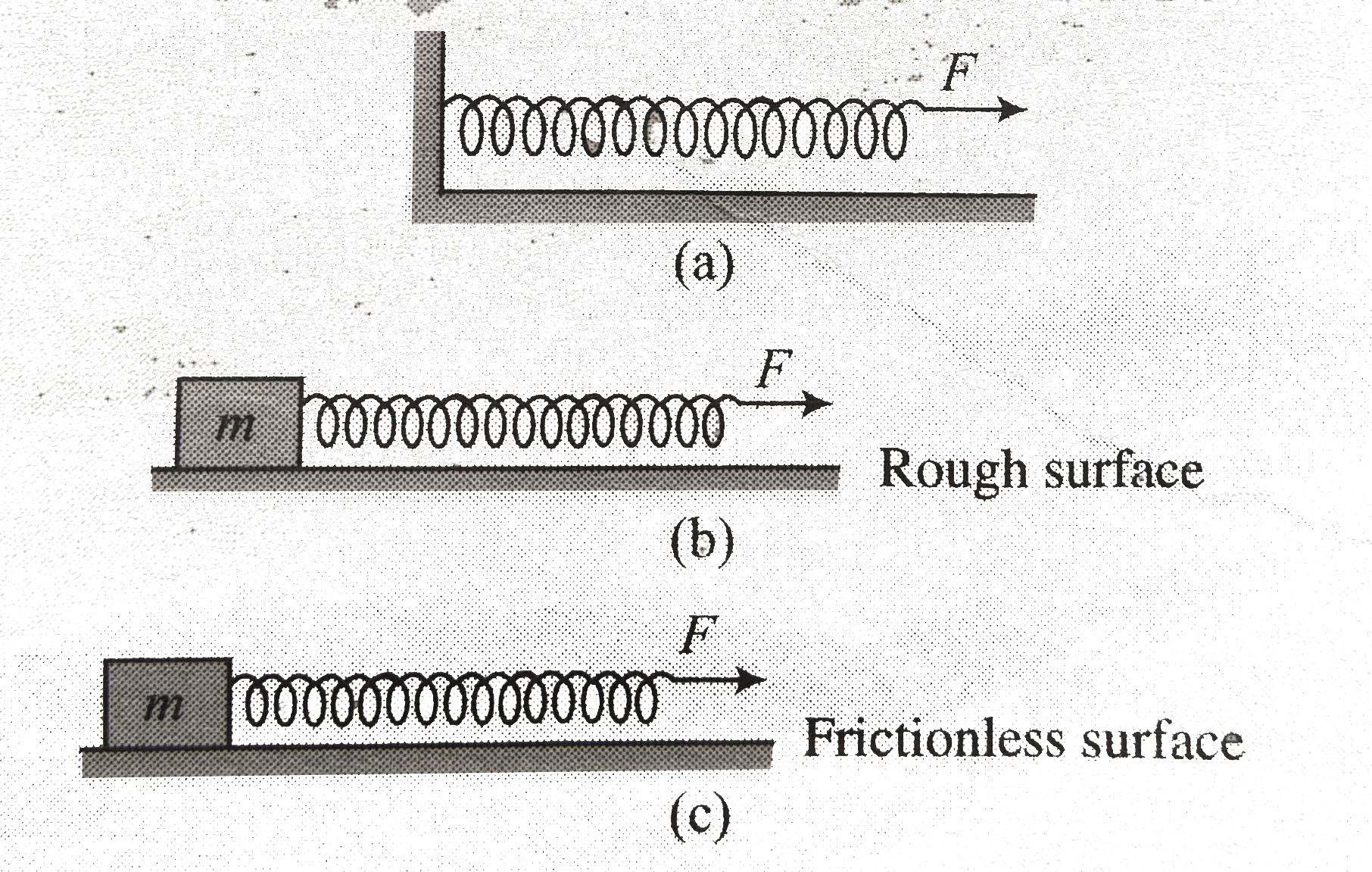
View SolutionThere are two ideal springs of force constants K_1 and K_2 respectively. When both springs are relaxed the separation between free ends is L. Now the particle of mass m attached to free end of left spring is displaced by distance 2L towards left and then released. assuming the surface to be frictionless. ((K_(1))/(K_(2))=4/3) . (Neglect size of the block) Suppose mass m hits the right spring and sticks to it. The extension in left spring when mass ‘m’ is in equilibrium position during its motion is :
View Solutionspring of force constant k clamped rigidly at onoe end and a mass m attached to its free end. A force F applied at the free end stretches the spring. Figure shows the same spring with both ends free and attached to a mass m at either end. Each end of the spring in figure is stretched by the same force F.
(a) What is the maximum extension of the spring in the two cases ?
(b) If the mass in figure and the two masses in figure are released free, what is the period of oscillation in each case?

View SolutionIn the figure S1 and S2 are two light springs of stiffness k and 4k respectively. When springs are in relaxed state, seperation between their free ends is 2x0 . A uniform solid cylinder of mass m and radius R(<x0) is placed exactly midway between the free ends of the springs with its axis horizontal and perpendicular to the springs . Now consider the two cases separately.
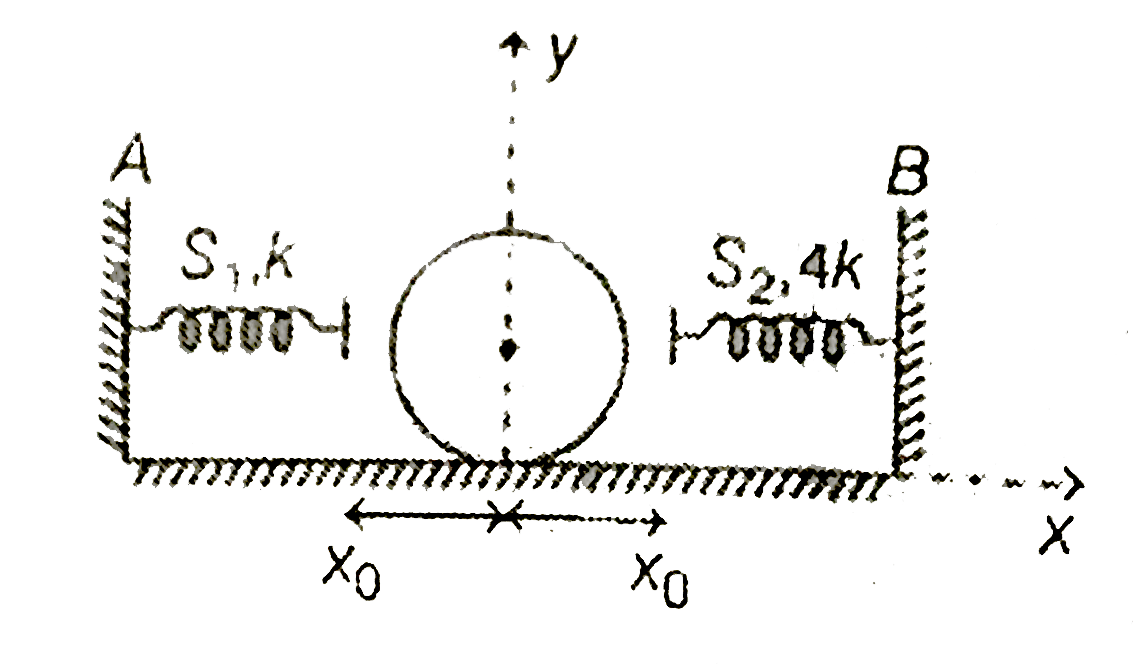
Case I : The cylinder is imparted speed v0 towards left. When the cylinder comes to rest momentarily the co-ordinates of its centre are either (−x1,R) or (x2,R) .
Case II: The Cylinder is imparted speed v0 toward left and angular speed ω0 in clockwise sense simultaneously . At the time of maximum compression in the springs the co-ordinates of centre of the cylinder are either (−x3,R) or (x4,R) Now answer the following questions assuming that friction is absent every where.
Choose the correct option
View SolutionFigure 14.26 (a) shows a spring of force constant k clamped rigidly at one end and a mass m attached to its free end. A force F applied at the free end stretches the spring. Figure 14.26 (b) shows the same spring with both ends free and attached to a mass m at either end. Each end of the spring in Fig. 14.26(b) is stretched by the same force F. What is the maximum extension of the spring in the two cases ?
View SolutionFigure 14.26 (a) shows a spring of force constant k clamped rigidly at one end and a mass m attached to its free end. A force F applied at the free end stretches the spring. Figure 14.26 (b) shows the same spring with both ends free and attached to a mass m at either end. Each end of the spring in Fig. 14.26(b) is stretched by the same force F. If the mass in Fig. (a) and the two masses in Fig. (b) are released, what is the period of oscillation in each case ?
View SolutionFigure 14.26 (a) shows a spring of force constant k clamped rigidly at one end and a mass m attached to its free end. A force F applied at the free end stretches the spring. Figure 14.26 (b) shows the same spring with both ends free and attached to a mass m at either end. Each end of the spring in Fig. 14.26(b) is stretched by the same force F.

What is the maximum extension of the spring in the two cases ?
View SolutionFigure 14.26 (a) shows a spring of force constant k clamped rigidly at one end and a mass m attached to its free end. A force F applied at the free end stretches the spring. Figure 14.26 (b) shows the same spring with both ends free and attached to a mass m at either end. Each end of the spring in Fig. 14.26(b) is stretched by the same force F. If the mass in Fig. (a) and the two masses in Fig. (b) are released, what is the period of oscillation in each case ?
View SolutionFigure a) shows a spring of force constant k clamped rigidly at once end and a mass m attached to its free end. A force F applied at the free end stretches the spring. Figure b) shows the same spring with both ends free and attached to a mass m at either end. Each end of the spring in figure is stretched by the same force F.
(a) What is the maximum extension of the spring in the two cases ?
(b) If the mass in figure and the two masses in figure are released free, what is the period of oscillation in each case?

View SolutionFigure 14.26 (a) shows a spring of force constant k clamped rigidly at one end and a mass m attached to its free end. A force F applied at the free end stretches the spring. Figure 14.26 (b) shows the same spring with both ends free and attached to a mass m at either end. Each end of the spring in Fig. 14.26(b) is stretched by the same force F.

What is the maximum extension of the spring in the two cases ?
View Solution
